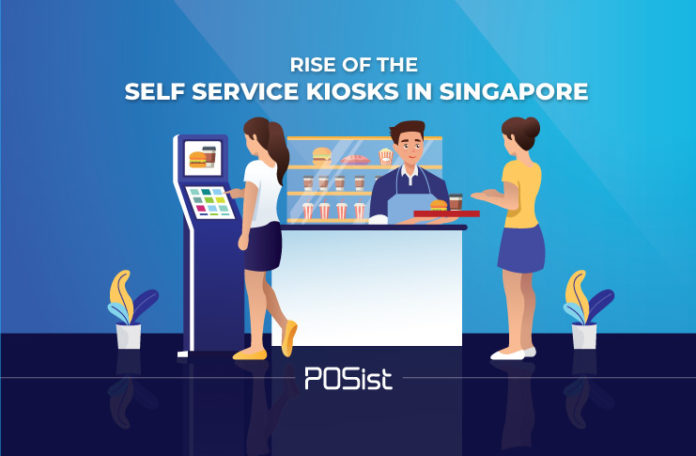The F&B industry in Singapore is expanding at a rapid scale. The total number of restaurants has increased rather steadily over the years, which has paved the way for the industry to sprawl like a wildfire. As the statistics say, in 2014 the total number of establishments in the F&B sector was 6,871, which increased to 7,229 in 2015 and further grew to 7,679 in 2016. Considering the widespread growth of the restaurants and food business, it is not very difficult to comprehend that the competition is excessively stiff in this lucrative domain.
However, restaurants in Singapore are striving hard to counter the problem that is lynching them and is standing as a giant obstruction to their growth. Yes, you have guessed it right! It is a persistent problem that is plaguing the F&B industry in Singapore: the lack of human resources. To counter this chronic problem effectively, Singapore government passed an act legalizing and encouraging the restaurants of this country to indulge in self-service kiosks or terminals which is also called as the self-service technology of SST. Ever since Singapore F&B industry landscape has seen a healthy growth of self-serving kiosks especially in the fast-food restaurant domain which has almost 477 outlets, which is 6.2% of the total number of establishments which is 7679.
The Rapid Adoption of Self-Service Kiosks
Self-service kiosks as a format was first brought into force by McDonald’s and the Golden Village Cinemas in Singapore. McDonald’s first introduced a self-service kiosk in 2004, and presently it has around 25 self-service kiosks. McDonald’s Director of Technology Tan Min Hui, stated, “We’ll continue to introduce self-service kiosks to more restaurants as well as leverage technology to offer our customers as an even better dining experience.” Following which, this concept attracted a lot of attention and is steadily getting accepted by the fast food franchises, and large chain restaurants in Singapore.
This format has gained widespread acceptance for reasons more than one. Not only it helps the restaurants to counter the chronic problem of labor shortage, but it also helps them to reduce their operating expense and boosts the customer experience as it accelerates the entire ordering process while reducing the scope of manual mistakes to a great extent.
Self-service kiosks, which customers can access 24X7 has been present in Japan for decades; however, it is never too late to catch up to something new. The F&B industry in Singapore has already made its presence felt in this format; they need to hone their skills a bit further!
The concept has garnered so much of attention that the fried chicken chain Popeyes joined the club alongside with the leading fast-food rivals like Yoshinoya, McDonald’s and BurgerUp.
Dickson Low, Popeyes Singapore’s group chief operating officer, on this new adoption of this format stated, “We used to have three cash registers at the outlet, but we were able to hire only up to two people to man them due to the tight labor market. This led to long queues and frustrated customers.” Hence, in a nutshell, with kiosks, the time taken to place an order and to serve the customers is generally halved to one minute per customers, and orders can also be customized easily.
Mostly in self-service kiosks, payment options are made cashless. Payments are generally accepted via cards, Nets, and EZ-link. Although this, however, does not mean that the customers who want to pay via cash will have no options on the table, they can very effectively hand over their cash to the staff upon collecting their orders.
The growing adoption of self-service kiosks has also raised grave concerns. With this concept nullifying the need for cashiers, there is the following question that has been raised by many: what about the cashiers who are already employed, will they be sacked, will they will out on the streets looking for jobs? Popeyes solved this problem by reemploying the cashiers as service ambassadors who greet the customers, encourage them to return trays and even deliver orders to them.
There are other leading brands like Subway who are also trying to explore this format to use it to their advantage. This increasingly shows that all the fast food chains are venturing into this arena to counter the plaguing problem.
Considering the tremendous shortage of workforce that exists in Singapore’s landscape, self-service kiosks is a new trend in Singapore which has come as a welcoming solution and hence it is readily accepted by all the leading fast food restaurant chains in the country. Let’s wait and watch how the self-service kiosks help the restauranteurs of this country and how it smoothens the entire restaurant operations.

















